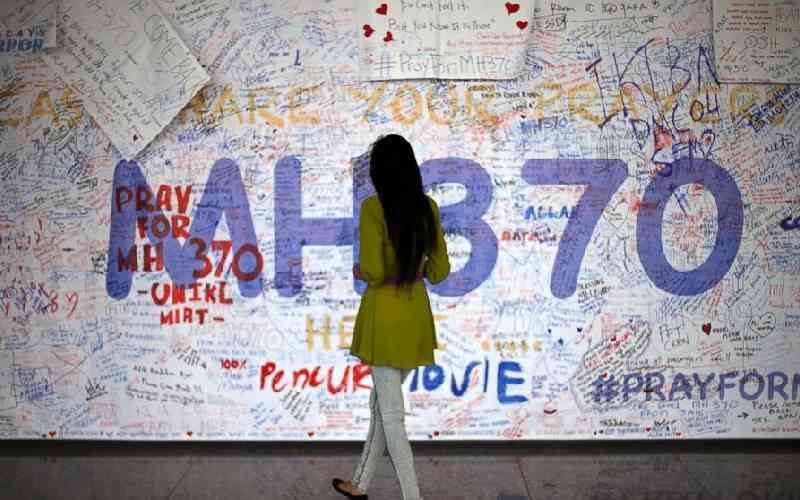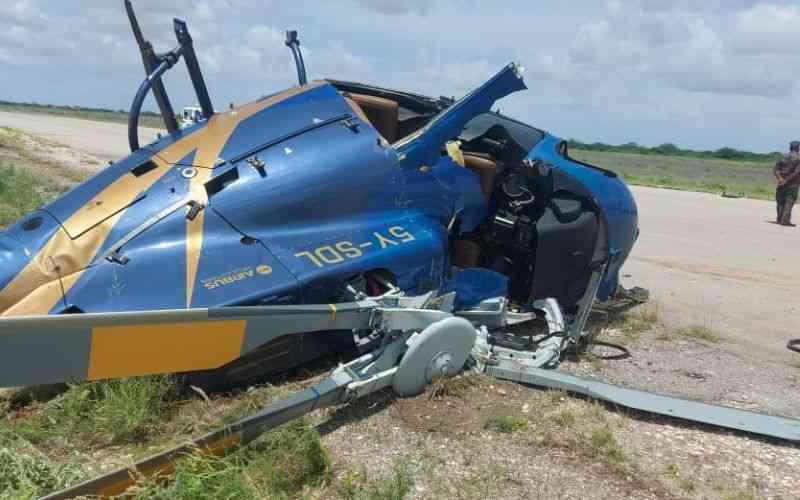On March 8, 2014 a Malaysia Airlines plane, with 239 on board, went missing and one year later investigators still do not know what happened. Could pilot suicide have been the cause?
“Someone was looking at Penang. Someone was taking a long, emotional look at Penang. The captain was from the island of Penang.”
There are times when Captain Simon Hardy’s analysis of flight MH370 sends shivers down the spine, especially in light of the recent case of the Germanwings Airbus flight 4U 9525.
An experienced Boeing 777 captain, he knows the Asian air routes like a commuter knows short cuts home. He flew them for 17 years.
He is convinced about something that no one wants to think is possible - that the captain of the flight, Zaharie Shah, deliberately hid the plane from radar and flew it thousands of miles off course, before it came down in the ocean.
He says the clues are in the route it took after it vanished from air traffic control. It turned back on itself and flew along the border of Malaysia and Thailand.
“It flew in and out of the countries eight times,” he says. “This is probably very accurate flying rather than just a coincidence. As both air traffic controllers in both those countries would probably assume that the aircraft was in the other country’s jurisdiction and not pay it any attention.”
But his most eerie theory comes a little later, as the aircraft skirts around the captain’s home island, Penang,
“It does a strange hook,” he says. “I spent a long time thinking about this and eventually I found that it was a similar manoeuvre to what I’d done in Australia over Ayers Rock. Because the airway goes directly over Ayers Rock, you do not actually see it very well because it disappears under the nose of the aircraft.
“So in order to look at it you have to turn left or right, get alongside it and then execute a long turn. If you look at the output from Malaysian 370, there were actually three turns not one. Someone was looking at Penang.”
Steve Landells, who flew Boeing 777s for a decade and is now a flight-safety expert at the British Airline Pilots Association, is still baffled as to what happened to flight MH370.
“None of the theories answer all the questions or fully explain what did happen that day,” he says.
Straight line
There is so much we still do not know, but we do know the route it flew between 00:41a.m. local time (take-off), and the last military radar fix at 02:22a.m. It shows the aircraft making a series of inexplicable turns. After that the assumption, based on the skinniest of data from a satellite, is that it flew south in a straight line for six hours.
“A lot of the theories pre-suppose that there was no-one there to fly the aircraft, but there are only three ways to turn a 777,” says Landells. “That’s manually flying it - actually turning the control wheel - flying it through the autopilot, or by pre-programming a route into the navigation computer. The problem with the first two is that you have to have someone in the cockpit. But if there was someone in the cockpit, why were there no radio calls made?”
Stay informed. Subscribe to our newsletter
The 777 has many back-up systems for its electrics, says Landells, so even if all fail, there is a battery connected to the captain’s instruments and one of the radios, so a call could have been made. Even if that fails, there is a propeller that drops out of the back of the aircraft, called a ram air turbine that provides enough electrical power to run the basic facilities, including a radio.
“The other possibility is a severe fire in the cockpit, which has happened in the past,” says Landells. “That might mean that the pilots would have to leave the cockpit. But if that was the case, then how did the aircraft continue flying for so long? It is very, very unlikely.”
The uncertainty prompts an uncomfortable question. Did pilot Zaharie Shah crash the plane on purpose, killing himself, the crew and the passengers? Such incidents are very rare. The possibility of pilot suicide is rare ... but not unheard of.
“We know what happened,” David Learmount, safety editor at Flight Global, has said of MH370. “There is only one thing it can be - a deliberate act by someone on board, probably the captain.” But the idea is highly controversial.
“The pilot suicide theory for flight MH370 has gained traction because, throughout the last year, there has been no evidence of an outside plot,” says aviation writer Sylvia Spruck Wrigley.
“The way MH370 happened seems an unlikely way to commit suicide - allowing the plane to continue going for so long. In the very rare cases of pilot suicide, it usually happens much quicker, pointing the plane at the ground and crashing it.”
Despite recent sightings of debris that could have broken off from the ill-fated aircraft, there is no tangible evidence pointing to what really caused the plane to crash, or indeed, its whereabouts.
 The Standard Group Plc is a
multi-media organization with investments in media platforms spanning newspaper
print operations, television, radio broadcasting, digital and online services. The
Standard Group is recognized as a leading multi-media house in Kenya with a key
influence in matters of national and international interest.
The Standard Group Plc is a
multi-media organization with investments in media platforms spanning newspaper
print operations, television, radio broadcasting, digital and online services. The
Standard Group is recognized as a leading multi-media house in Kenya with a key
influence in matters of national and international interest.
 The Standard Group Plc is a
multi-media organization with investments in media platforms spanning newspaper
print operations, television, radio broadcasting, digital and online services. The
Standard Group is recognized as a leading multi-media house in Kenya with a key
influence in matters of national and international interest.
The Standard Group Plc is a
multi-media organization with investments in media platforms spanning newspaper
print operations, television, radio broadcasting, digital and online services. The
Standard Group is recognized as a leading multi-media house in Kenya with a key
influence in matters of national and international interest.








